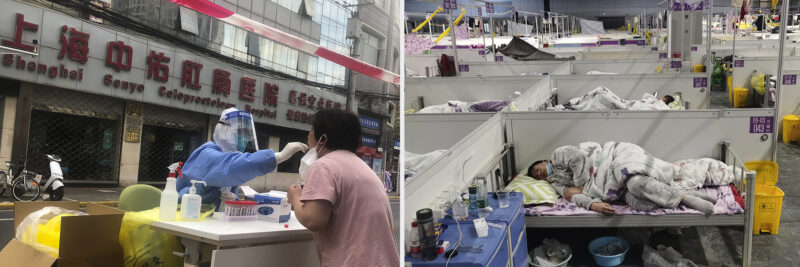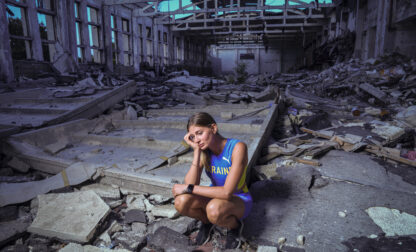The numbers didn’t add up.
As Shanghai’s COVID-19 cases soared into the hundreds of thousands, no deaths were reported in the official statistics for weeks, even as anecdotes about lost loved ones leaked on social media. AP journalists Huizhong Wu, based in Taipei, and Beijing-based Dake Kang learned why, shedding light on how the official numbers are blurred by the narrower, less-transparent and sometimes inconsistent way that China tallies COVID-19 statistics.
In a challenging reporting environment, their story explained what was behind the discrepancy, revealing the true extent of the outbreak and showcasing the power of fact-based AP reporting.

Kang received an early tip that the situation in Shanghai was spiraling out of control. Using sources he has developed over time,he was able to determine the key factors behind the questionable numbers: Chinese health authorities’ narrow criteria for what is classified as a COVID-19 death,confusion over Shanghai’s definition of asymptomatic cases and two mismatched tracking systems that give conflicting data on cases and test results.
The reporting was corroborated through interviews with family members of patients who had tested positive,a family’s publicly released phone call with a government health official, an online archive compiled by families of the dead and records of official statements.
Shanghai's outbreak has hundreds of thousands of cases,and as of today just 25 deaths. Families who lost loved ones,the viral call with a city CDC official, and an internet archive marking deaths all raise issues with how they're getting to this number https://t.co/hyU160fCtp
— Huizhong Wu (@huizhong_wu) April 21, 2022
Wu focused on the human side of the story,finding survivors who lost loved ones to the disease — not an easy task in an environment where talking to foreign media on a sensitive issue can have consequences. Police in Shanghai had gone to families of survivors,warning them not to talk to foreign journalists. Many of the people Wu reached out to refused to talk to her. She used Chinese social media and previous contacts to find interview subjects, some of them developed out of her previous story on deaths in a Shanghai hospital for the elderly during the outbreak. Her diligence showed the real-life consequences of the government’s policies,making the story both engaging and compelling.
For determined reporting to document what was really happening in Shanghai,and why the official numbers were so misleading, Wu and Kang share AP’s Best of the Week — Second Winner honors.
Visit AP.org to request a trial subscription to AP’s video,photo and text services.
For breaking news, visit apnews.com




